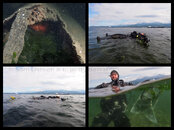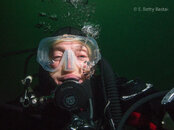Oh... I thought we were in disagreement. I was wrong.
Yes; challenging conditions can occur in any body of water. The most challenging however, are in cold water.
Welcome to ScubaBoard, the world's largest scuba diving community. Registration is not required to read the forums, but we encourage you to join. Joining has its benefits and enables you to participate in the discussions.
Benefits of registering include
Oh... I thought we were in disagreement. I was wrong.
Hmmm... <1m viz and extreme weather here in typhoon/monsoon season... yeah, but no dry-gloves...
The definition of 'cold water' is something I've found interesting. To some it's 55 degrees, to others 70 and there's the below 40 degree group. It truly is a matter of perspective...
I will agree to that. Now I only like to be in warm water, not 18 anymore.View attachment 186241

 :depressed: !!!
:depressed: !!! 





